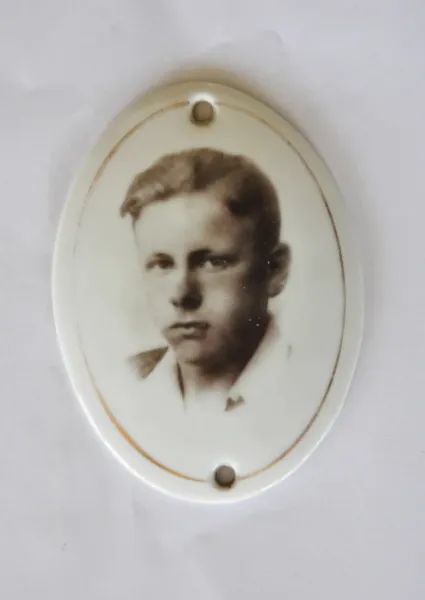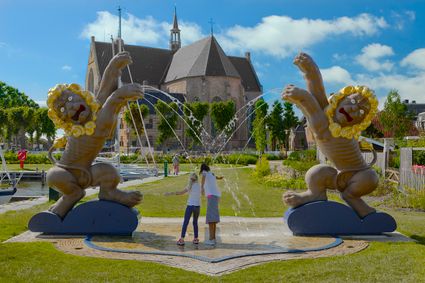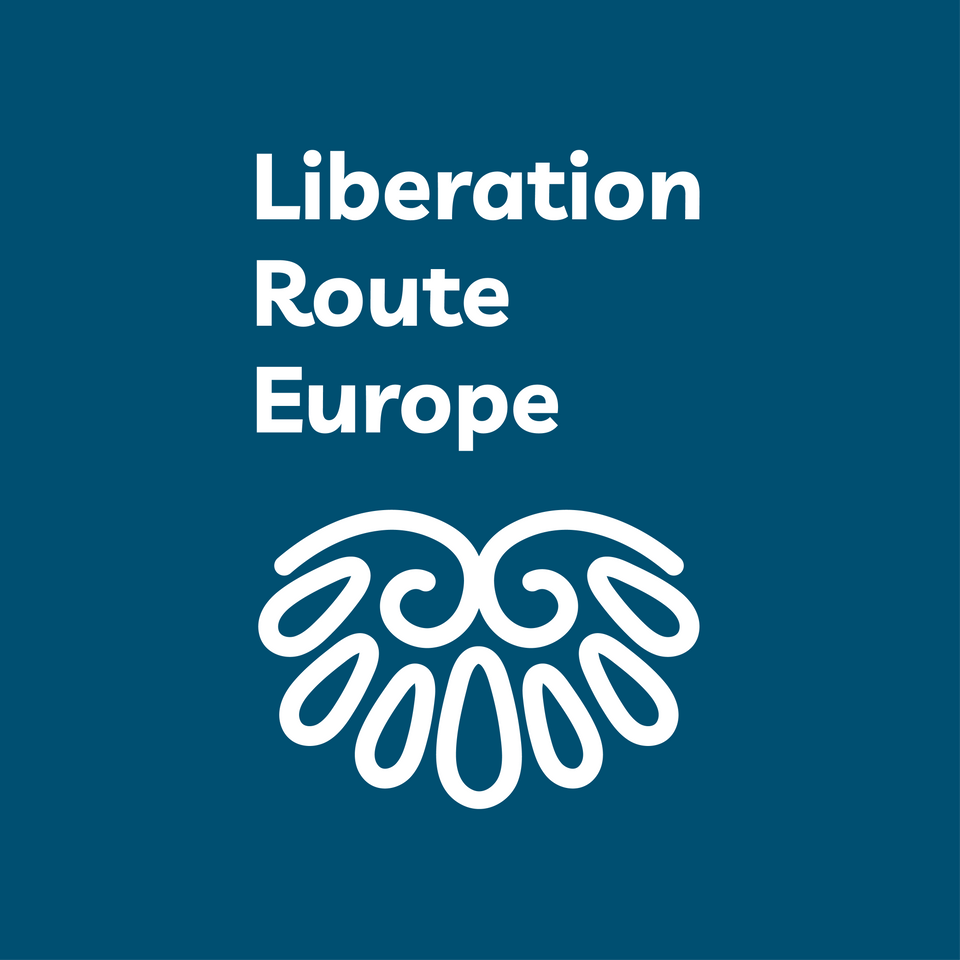IJlst-Workum | Liberation route: section 3
A strong example of resistance took place just before the liberation of the province of Friesland. On 12 April 1945, the German army sent an ammunition train from Leeuwarden to Stavoren. It was a last serious semblance of an attempt of the German occupying forces in Friesland to offer any significant resistance. But a brave act of sabotage by the resistance derailed the train, rendering it unusable.
The train consisted of 15 wagons carrying 150 tonnes of ammunition. The Dutch Domestic Forces (NBS) were aware of this transport and wanted to prevent it from reaching its destination. Between Hieslum and Nijhuizum (about three kilometres north-east of Workum), the Gaastmeer-Oudega resistance group tampered with the rails, resulting in a train derailment.
The English Royal Air Forc…
A strong example of resistance took place just before the liberation of the province of Friesland. On 12 April 1945, the German army sent an ammunition train from Leeuwarden to Stavoren. It was a last serious semblance of an attempt of the German occupying forces in Friesland to offer any significant resistance. But a brave act of sabotage by the resistance derailed the train, rendering it unusable.
The train consisted of 15 wagons carrying 150 tonnes of ammunition. The Dutch Domestic Forces (NBS) were aware of this transport and wanted to prevent it from reaching its destination. Between Hieslum and Nijhuizum (about three kilometres north-east of Workum), the Gaastmeer-Oudega resistance group tampered with the rails, resulting in a train derailment.
The English Royal Air Force (RAF) was informed of the derailed train via the resistance's signal box. Allied Spitfire fighters first conducted a reconnaissance, shortly after which the wagons were set on fire.
The shelling caused huge explosions, which could be heard for miles around Workum. In retaliation, several people in hiding were arrested and sentenced to death. Fortunately, the liberation on 16 April 1945 stopped their execution. However, a 60-year-old Workum resident was killed by an exploding shell during the ammunition clearance on 17 May 1945. To this day, farmers still find old ammunition in the fields.
Liberation Route Europe is a transnational memorial. A route that connects memorial sites and stories from all over Europe. For more information, visit www.liberationroute.com
Sights on this route
Starting point:
Waypoint walk 91
IJlst
Navigate to starting point
Waypoint walk 91
Poem 'Graf te Blauwhuis'
The small village of Abbega and the neighbouring hamlet of Abbegaasterketting hid dozens of people in hiding during the war. In February 1945, a raid shocked the small community. Resistance fighter Gerrit Rijpma, 18, was fatally hit in the process.
Poem 'Graf te Blauwhuis'
The small village of Abbega and the neighbouring hamlet of Abbegaasterketting hid dozens of people in hiding during the war. In February 1945, a raid shocked the small community. Resistance fighter Gerrit Rijpma, 18, was fatally hit in the process. The famous Dutch writer Gerard Reve, who lived next door to a sister of Gerrit Rijpma in nearby Greonterp from 1953 to 1971, was deeply moved by the story of his neighbour's youngest brother. As a tribute to Gerrit, he wrote the poem 'Graf te Blauwhuis'.
According to witnesses, as many people in hiding lived in Abbega and the neighbouring hamlet of Abbegaasterketting as civilians.
Among them were Jewish people in hiding, people who had participated in railway strikes, deserters and young men from the surrounding area who wanted to avoid forced labour. Weapons for the resistance were also hidden there.
Abbegaasterketting was located next to the Bolswardervaart canal, and the absence of paved roads made access difficult. In addition, the inhabitants had implemented an ingenious alarm system: by means of an electric bell, people warned each other when something was wrong, and two people in hiding were on guard every night.
On 8 February 1945, at around half past eleven in the morning, the alarm bell sounded in the Rijpma family home. At that time, the brothers Yp and Gerrit were working in the barn.
When they went outside, they saw a lot of people running away in panic. This is why the brothers decided to sail down the Bolswardervaart, which divides the hamlet in two pieces, in a rowing boat. They hoped that they could get themselves to safety a little bit further on in a bend of the canal, behind the net. On their way there, they picked up their neighbour Minze van der Veen and a person in hiding, who were standing on the other side of the canal. Meanwhile, the German soldiers, aided by members of the Landwacht, a Dutch semi-military organisation, had set off in pursuit and opened fire on the fleeing people. Minze van der Veen was hit in his right elbow. Gerrit was hit three times: one bullet went straight through his body, another lodged in his back, and the third bullet went through his cheeks and teeth. Because the occupiers refused to help, Yp had to carry his dying brother to the boat and take him to a farmhouse nearby all by himself. The help from a woman living in the neighbourhood, who was a nurse, came too late. In great haste, curate Stolwijk of Blauwhuis was sent for, who administered the last rites to Gerrit. He died shortly afterwards. He was buried in the Catholic Cemetery in Blauwhuis.
The famous Dutch writer Gerard Reve, who lived in nearby Greonterp next to a sister of Gerrit Rijpma from 1953 to 1971, was deeply touched by the story of his neighbour's youngest brother. As a homage to Gerrit, he wrote the poem 'Grave in Blauwhuis':
GRAVE IN BLAUWHUIS (for neighbour H., in G.) He ran away, but did not escape, and was hit, and died, eighteen years old. A militant inscription cries out loud, but a sad and silent face looks out from the brown enamelled portrait. Still a child. Goodbye dear boy. You, who are King, of this and that, of whatever, yes, You, answer me, You know why, I don't. That Kingdom of Yours, remember, will it ever be?
In 1983, the mortal remains of Gerrit were transferred from the cemetery of Blauwhuis to Loenen National War Cemetery.

Workum (Warkum)
Workum (or Warkum as we say in Friesland), is one of the famous Frisian cities that has enjoyed city rights since 1399. Located on the shores of the former Zuiderzee and bordering the Frisian lakes.

End point:
Waypoint walk 64
Workum
Navigate to endpoint
Waypoint walk 64
Workum
Navigate to endpoint
Directions
Starting point:
Waypoint walk 91
IJlst
Navigate to starting point
The story of the Liberation of Western Europe is a book with many chapters, with some starting before the beginning of the war in 1939 and some others often ending years after the end of the conflict in 1945. Through the Liberation route Europe, you learn more about the storylines, key military events, personal stories and biographies from the second world war in Europe. Check out www.liberationroute.com for more routes, fragments and stories.
End point:
Waypoint walk 64
Workum
Navigate to endpoint
- 91
- 84
- 85
- 88
- 61
- 73
- 72
- 90
- 91
- 80
- 32
- 40
- 61
- 60
- 63
- 64



